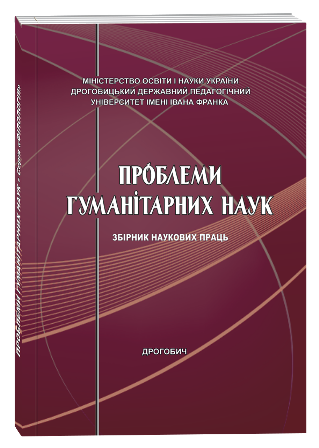ПЕРЕКЛАД РЕАЛІЙ У ТЕКСТАХ КУЛІНАРНИХ ВІДЕОРЕЦЕПТІВ
DOI:
https://doi.org/10.24919/2522-4565.2022.52.8Ключові слова:
кулінарний рецепт, реалія, стратегія форенізації, перекладацькі трансформації, транскрибування, описовий перекладАнотація
У статті проаналізовано особливості англо-українського перекладу реалій у текстах кулінарних відеорецептів. Матеріалом дослідження послугували самостійно виконані переклади 37 відеорецептів різдвяної тематики з кулінарних YouTube-каналів Гордона Рамзі, Джеймі Олівера, Анни Олсон. Представлено приклади перекладу одиниць тематичних груп «Назви страв», «Назви інгредієнтів страв», «Назви напоїв», «Власні назви». Провідною стратегію перекладу реалій визнано стратегію форенізації як таку, що найповнішою мірою забезпечує точність відтворення інформації, а основним прийомом – транскрибування. На вибір перекладацького відповідника впливали загальні закономірності й правила перекладу аудіовізуальних текстів, що унеможливлювали застосування коментарів та мінімізували описовий переклад. Переважну більшість зафіксованих лексем-реалій поки не кодифіковано словниками, що змушує перекладача звертатися до живого мовлення, відстежувати тенденції слововживання й засвоєння іншомовних слів, приділяти увагу дотриманню правописних норм української мови як мови перекладу. Описані кулінарні реалії, належні з походження до тої чи тої національної кухні, стають елементами багатьох національних кухонь світу. Це один із виявів глобалізаційних світових процесів. Тож перекладач повинен мати доволі високий рівень обізнаності з кулінарною культурою різних народів. Проаналізовані англомовні кулінарні тексти виконують роль ретрансляторів і популяризаторів кулінарних традицій різних народів і націй, а англійська мова виявляється посередником, завдяки якому в українську мову проникає багато чужомовних кулінарних назв – французьких, італійських, іспанських, арабських, шведських, з мови їдишу. Це, безумовно, пов’язано зі статусом англійської мови як глобальної. Актуальною є проблема лексикографічного опису та кодування нових лексичних одиниць із сфери кулінарії. Запропоновані у статті слова та словосполучення як україномовні відповідники кулінарних реалій можуть бути уведені до тлумачних та перекладних словників сучасної української мови. Вони можуть бути легко та швидко адаптовані до граматичної системи української мови. Зафіксовано значну кількість граматичних трансформацій, застосованих під час перекладу речень із реаліями.
Посилання
Вільний тлумачний словник. 2013–2018. URL : http://sum.in.ua/f/.
Державецкая И. Глюттоническая лексика и проблемы её перевода. Ученые записки Таврического национального университета им. В. И. Вернадского. Серия «Филология. Социальные коммуникации». 2013. С. 466–470.
Жулавська О., Заболотна І. Способи відтворення кулінаронімів українською мовою. Науковий вісник Міжнародного гуманітарного університету. Серія : Філологія. 2021. № 52. Том 2. С. 137–140.
Панченко О.І. Глютонічний дискурс як проблема перекладу. Науковий вісник Дрогобицького державного педагогічного університету імені І. Франка. Серія : Філологічні науки (мовознавство). 2021. № 16. С. 90–95.
Словник української мови: в 11 т. URL : http://sum.in.ua/s/.
Український правопис. Київ : Наукова думка. 2019. 391 с.
Чернова Ю., Гаращенко Т. Кулінарна термінологія та проблеми її перекладу. Молодий вчений. 2018. № 12 (64). С. 148–151.
Burton K. L. You Are What You Eat: Investigating Food Discourse and Digitally-Mediated Identities. Open Access Dissertations, 2016. 432 p. URL : http://digitalcommons.uri.edu/oa_diss/432.
Mac Con Iomaire M. The Language of Food: A Review of the 2009 Oxford Symposium on Food and Cookery. Journal of Culinary Science and Technology. 2009. Vol. 7. № 2–3. Р. 211–217. Cambridge Dictionary. URL : https://dictionary.cambridge.org.



